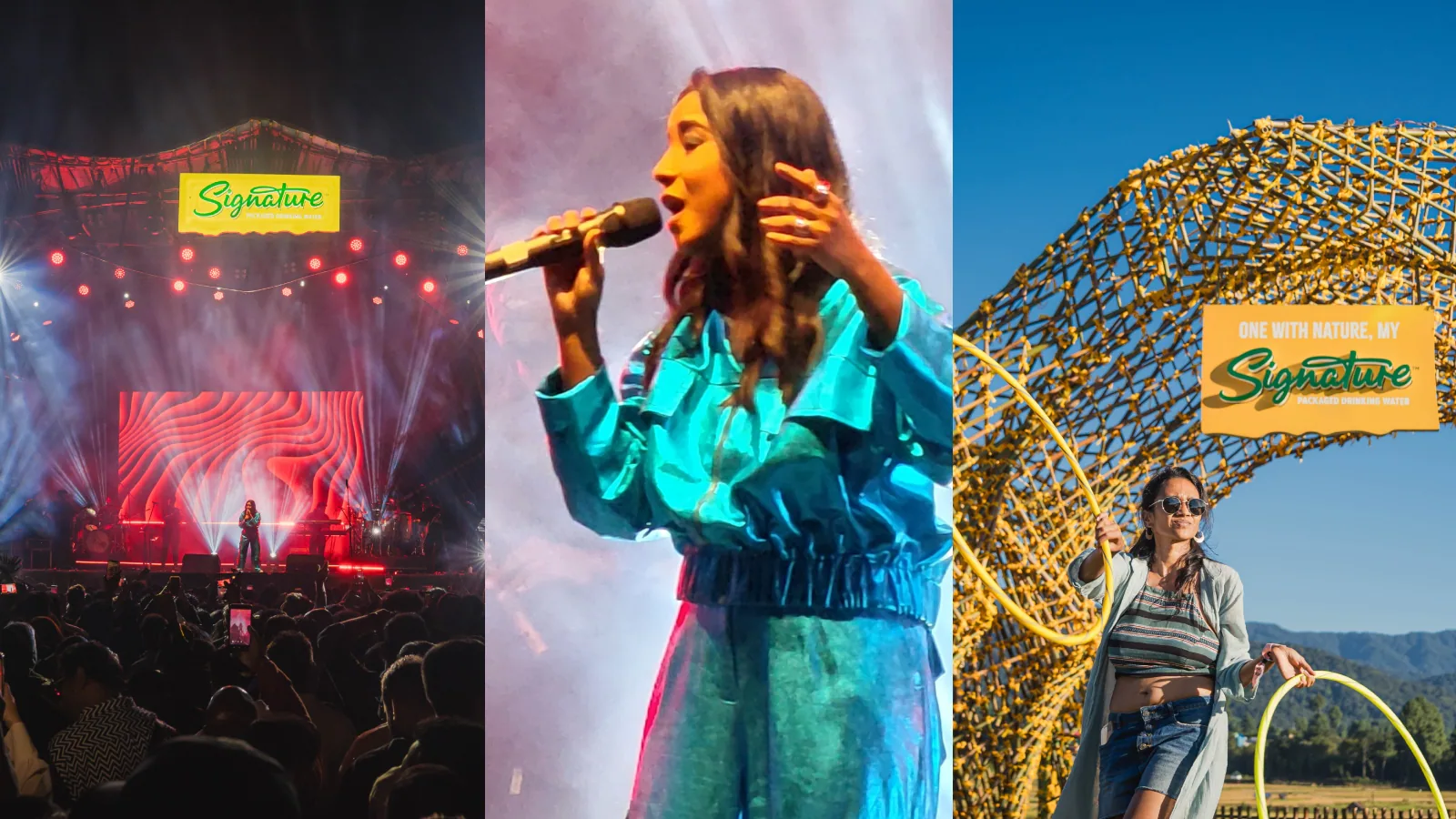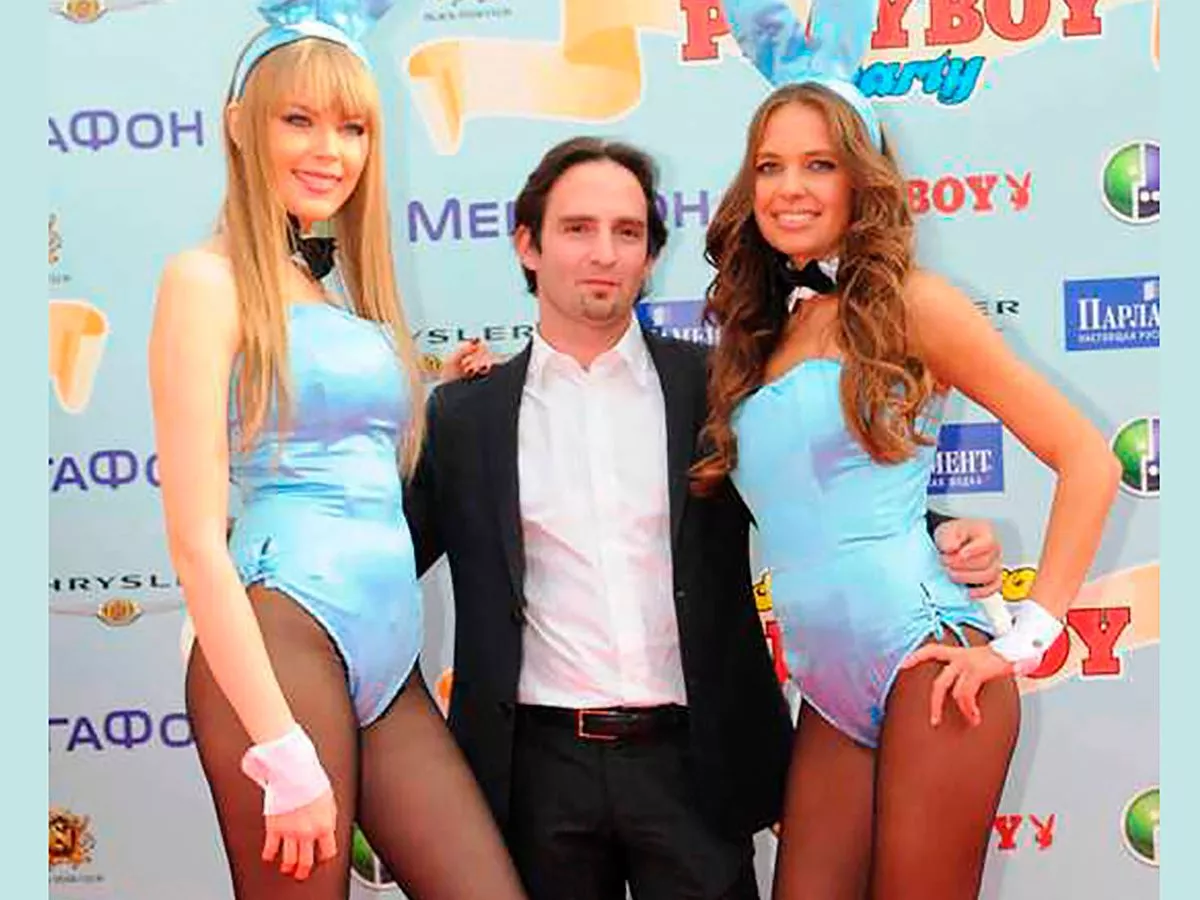By News18,Yatamanyu Narain
Copyright news18

The Ziro Music Festival 2025, set against the breathtaking paddy fields and rolling hills of Arunachal Pradesh’s Ziro Valley, once again proved why it is hailed as India’s most iconic outdoor music experience. Over four days, the festival brought together an eclectic mix of folk traditions, global sounds, and contemporary indie voices, all woven into a backdrop that felt as alive as the music itself. Known for its deep commitment to sustainability and its unique blend of culture and community, the festival this year showcased not only groundbreaking performances but also environment-first practices that turned the valley into a living example of conscious celebration. From bamboo-built stages to plastic-free zones, from intimate workshops to large-scale sonic spectacles, Ziro 2025 reaffirmed its identity as more than a festival, it was a cultural movement, a shared practice of harmony between music, people, and nature.
View this post on Instagram
A post shared by Ziro Festival (@zirofestival)
Prologue: The Valley Before the First Note
I reached Ziro just as the afternoon was giving itself a gentle shake. Clouds drifted like alabaster sailing stones across an open blue; terraces shone a muted jade; bamboo skeletons of stages seemed to lift themselves out of the ground rather than sit upon it. It’s always striking how Ziro is built: Danyi (sun) and Piilo (moon) rise from bamboo and wood, shaped by Apatani artisans who know the grammar of this valley better than any architectural drawing. Even the pathways feel alive; even the signboards look weather-carved rather than printed.
View this post on Instagram
A post shared by Ziro Festival (@zirofestival)
Between the stages, Signature Packaged Drinking Water had anchored a glowing mangrove “root” installation made entirely from upcycled materials a mountain valley bearing witness to a coastal pledge. The brand’s environmental focus wasn’t a side stall; it was a compass. As Varun Koorichh, Vice President & Portfolio Head – Marketing, Diageo India, put it, “The Ziro Festival of Music is not just an iconic cultural event, but also a symbol of harmony between people, music, and nature. As presenting partners, Signature Packaged Drinking Water is proud to strengthen this shared vision. This year, we showcased our efforts to support the regeneration of lost mangrove cover along the Odisha coast through a special installation at the Ziro Festival made with an environment first approach using up cycled material. For us, culture and conscious living go hand in hand, and this partnership was about inspiring a generation to live mindfully, sustainably, and in tune with nature.”
View this post on Instagram
A post shared by Cynthia (@cynthiadoley)
All around, the festival’s environment-first practices were visible without being shouted: bamboo and wood builds; Tamul leaf plates; meticulous waste segregation and composting; a plastic-bottle ban backed by biodegradable, reusable cups; washrooms at every corner; and a campus-wide politeness that felt almost infrastructural. As co-founder Anup Kutty said during the festival:, “Ziro Festival has always been about discovery of new sounds, ideas, cultures and ways of living. Each year, we see music creating powerful connections between artists, audiences, and the valley itself. That magic of discovery is what keeps us going, and what makes Ziro such a unique experience.”
View this post on Instagram
A post shared by Rituparna l cinematographer l Assam (@etc_visuals)
I took a long breath, watched the effulgent sun descend beside the mountains, vanish beyond the paddy edge, and then walked toward Day One.
Day One When the Valley Woke Up (Thu, Sept 25)
View this post on Instagram
A post shared by Signature One With Nature (@signatureonewithnature)
Danyi (Sun) Stage opened like a ceremonial drumroll with the No. 7 Air Force Band from Guwahati brasses gleaming, military blues bright against bamboo tan. Their precision wasn’t stiff; it was celebratory, a respectful raising of the curtain.
Awaz (Arunachal Pradesh) followed with songs that felt bark-textured and earth-scented stories of love, land and nighttime spirits sung as if the valley were a relative listening in. Then Nilî (Assam) carried that intimacy forward, his voice delicate yet insistent, prying open the afternoon with the kind of confessional warmth Ziro is built to amplify.
Waang (Tripura) turned the dial from contemplative to kinetic earthy percussion, a stride in the beat, laughter rising from the crowd as shoulders loosened. Remi Remi (Arunachal Pradesh) closed Danyi with a proud, clear signal of identity: folk-fusion shaped by and for the Tani clans, a set that felt like cultural memory sung in the present tense.
At dusk, Piilo (Moon) Stage unfurled its wings. The Dreamcatchers (Sikkim) opened with Yaad, and the valley became a choir then Bitawney Chu, Anoutho, Paristithi, each landing like a shared memory. Your Sweetest Memories (Mizoram) followed with synthwave nostalgia charging headlong into punk energy; their set had the gleeful rush of a bedroom band flinging open a stadium door.
View this post on Instagram
A post shared by The Dreamcatchers Official (@the_dreamcatchers_official_)
View this post on Instagram
A post shared by The Dreamcatchers Official (@the_dreamcatchers_official_)
Signal W (Goa) arrived with their dreamy-to-feral pendulum: Vent, Close, Starfall and more introspective lyrics lashed to playful, stadium-sized musicality. Then Swarathma (Bengaluru) lit the field: Raah E Fakira like a flare, Pyaasi urgent, Ee Bhoomi the perfect Ziro anthem activism that dances.
View this post on Instagram
A post shared by Signal W (@signalwmusic)
View this post on Instagram
A post shared by Signal W (@signalwmusic)
Chorun Mugli (Arunachal Pradesh) closed the night on Piilo, returning the valley to itself with Kala Kala, Ja Jin Ja, Maiyaan and Abo Emru Dagena his running project of cultural revival heard here like a homecoming. The applause felt more like gratitude than noise.
View this post on Instagram
A post shared by Chorun Mugli (@chorunmugli)
View this post on Instagram
A post shared by Ziro Festival (@zirofestival)
Across the day, Popi Sarmiñ Studio (named for an Apatani earth goddess) was its own miniature festival: visual storytelling for kids, improv theatre, art therapy, origami, and a sign-language hour for teens and adults. After dark, stargazing telescopes pointed us at the Pleiades a valley of stars hovering above a valley of paddy.
View this post on Instagram
A post shared by Ziro Festival (@zirofestival)
Day Two Rhythm, Roar and Restlessness (Fri, Sept 26)
Danyi began light and bright with Pink Eye(Nagaland), the indie-pop rock band, a crisp invitation to gather early. Susmita Das (Odisha) anchored the afternoon to rich literary and folk lineages devotional arcs, literature-set pieces, and socially engaged songs rendered timeless rather than dated. Then Pandit Abhay Rustum Sopori turned the santoor into stained glass long, crystalline lines that made the crowd stand still.
View this post on Instagram
A post shared by PINK EYE (@pinkeyex)
View this post on Instagram
A post shared by Abhay Rustum Sopori (@abhaysopori)
By late afternoon, Chowraasta (Telangana) lifted spirits with Telugu folk spliced to reggae/rock grit Oorellipotha Mama, Pisinari, Kanche Leni Desam igniting collective movement. (Throughout the grounds, Zubeen Garg’s Maya floated from food circles and quiet corners a tribute shared between strangers and friends. It lived ambient, as the valley’s memory.)
Piilo’s Friday arc was a global braid: Da Minot (Meghalaya) opened with Khasi and Jaintia rhythms reborn for a contemporary audience. Arivu (Tamil Nadu) turned protest into celebration with Enjoy Enjaami, bodies moving as one field. Ford Trio (Thailand) folded neo-soul into psychedelia textures and grooves recalling their YANT era and Let Them Kids See, taut and tender at once.
View this post on Instagram
A post shared by Da Minot (@da_minot)
View this post on Instagram
A post shared by Arivu (@therukural)
View this post on Instagram
A post shared by FORD TRIO (@ford_trio)
View this post on Instagram
A post shared by FORD TRIO (@ford_trio)
Uniyal (Uttarakhand) stepped in with rap-poetry that plays like cinema: Vartamaan, Kamli, Mera Parichay, Bablu Babylon Se identity manifestos delivered with gravity and musical and lyrical poise. Kin’gongolo Kiniata (Congo) closed Piilo with handcrafted percussion forged from found objects and a call for dignity and justice that traveled far beyond language.
At Takër, Gandhar (Live) (Mumbai) moved the night into a glowing electronic seam, then Finding Mero (Meghalaya) deepened it with lush, emotive ambience.
View this post on Instagram
A post shared by Finding Mero (@finding.mero)
Popi Sarmiñ kept the civic heartbeat: weaving with natural fibres, origami, yoga, and a late-night Waste Challenge that gamified cleanup. Kids and twenty-somethings turned trash-sorting into a treasure hunt, and the site felt tangibly lighter for it.
View this post on Instagram
A post shared by Ziro Festival (@zirofestival)
Day Three The Valley Finds Its Voice (Sat, Sept 27)
Saturday woke with certainty. Damdak the Apatani folk dance grounded the day; heels drummed soil, arms lifted sky-high, the whole movement like a living overture. Saitejas Chandrashekar (Karnataka) followed, bending folk textures into restless electric color. The Carnatic harmonica recital turned a rarely-heard instrument into afternoon raga, tradition re-imagined in real time.
Rudy Mukta brought tender R&B lines raised on Carnatic discipline diary-page intimacy meeting contemporary production in a set that floated and held. Then the legendary Rudy Wallang led his Rudy Wallang Band (Meghalaya) into the blues: long, speaking guitar; the feel of road dust and resolve. He addressed the creep of AI-generated music into streaming ecosystems and his decision, at one point, to pull tracks in protest not as a lecture, but as a musician’s line in the sand before dropping a rocking song and solo that said the rest.
View this post on Instagram
A post shared by Leeanne Besterwitch (@leeanne_besterwitch)
As the light tilted, Piilo became a current. Gauley Bhai (Bengaluru) threaded Sunbari’s material Nepali folk braided to South Indian rhythmic density and blues undertow hypnotic and human. Guitar Prasanna (USA/India) took the electric to Carnatic phrasing, then swung it through jazz; one moment rain-sharp, the next as warm as prayer. Donn Bhat (Delhi) vaulted from experiment to communion with Ishq Chhattisgarhi folk and electronica dovetailed until the entire field moved like one body.
View this post on Instagram
A post shared by Donn Bhat (@donnbhat)
By late evening, a soft fog rolled in just as Shilpa Rao (Mumbai) took the stage and walked us through two decades of playback high-water marks: Kalank, Ho Na Jaaye Pyaar, Bulleya, Tere Hawale, Tose Naina Lage, Besharam Rang. Her tone equal parts silk and blaze cut cleanly through the mist. It wasn’t raining; the weather simply changed register. The stage lights found the fog and drew halos; the valley turned cathedral-quiet between songs.
View this post on Instagram
A post shared by Shilpa Rao (@shilparao)
View this post on Instagram
A post shared by Shilpa Rao (@shilparao)
Signature’s presence felt especially cohesive on Saturday: the Flow State of Mind workshop (with Yamini Gowda and Anchal Kota) spun hula hoops and breathwork into a practice of playful mindfulness; the Signature Cocktail Masterclass introduced the East India Julep balanced, herb-forward, taught with a “less waste, more intention” ethos and served in biodegradable glasses. Nearby, the Signature Bar and the Budweiser beer stall kept service brisk, friendly, and aligned to the site’s sustainability rules.
Flow State Of Mind Workshop.
Flow State Of Mind Workshop
Flow State Of Mind Workshop
By the time Ceziki (Tamil Nadu) and Kamari (Meghalaya) closed Takër with sleek electronic sets and expressive DJ-led vocals, the fog had deepened to velvet. We didn’t just disperse we dissolved into it.
View this post on Instagram
A post shared by KAAAYY (@kamari._.____)
Day Four Rainbows, Reverence and Revelations (Sun, Sept 28)
The final morning began with yoga and meditation at Popi Sarmiñ, kids stitched puppets, others carved Apatani paddy flutes (Etu), and the day’s learning arc felt like a communal exhale.
View this post on Instagram
A post shared by CAMDIR TOYOTA (@camdirtoyota)
Danyi opened with the Sikkim Integration Dance, a bright braid of Bhutia, Lepcha, and Nepali traditions, and the majestic Singhi (Snow Lion) tall-stepping across the stage like a living crest. Sori Senjam (Manipur) Hindustani classical with the Manipuri penna played like rain held on a string. Soumik Datta & The Travellers (UK) carried migration and climate grief into sarod lines and ensemble surges that felt both intimate and oceanic. Barmer Boys (Rajasthan) arrived blazing Manganiyar tradition colliding with Sufi call-and-response and beatboxing bamboo shook, dust lifted, the field laughed and sang.
View this post on Instagram
A post shared by Soumik Datta / Arts (@soumikdatta)
View this post on Instagram
A post shared by Barmer Boys (@barmerboysofficial)
At Piilo, Larger Than 90 (Meghalaya) blasted horn-driven funk and swagger; Anna Erhard (Switzerland) threaded wry observation into jangly hooks Botanical Garden, Hot Family, 170 the crowd nodding as much to the wit as to the groove. Susheela Raman (UK) sang molten and mystic; Ye Mera Deewanapan Hai turned the valley into a mirror.
View this post on Instagram
A post shared by Larger Than 90 (@largerthan90)
View this post on Instagram
A post shared by Larger Than 90 (@largerthan90)
View this post on Instagram
A post shared by Monika Mishra Pandey (@28mishramonika)
View this post on Instagram
A post shared by Monika Mishra Pandey (@28mishramonika)
Swanand Kirkire’s Baawra LIVE (Mumbai) worked like an evening-length conversation in song Tu Kisi Rail Si Guzarti (with an extra stanza he hasn’t recorded), Ala Barfi, Shauq, All Izz Well, Baawra Mann literature and cinema braided by a voice that carried both mischief and ache. When O Ri Chiraiya arrived, it felt less performed than offered, and the crowd held its silence in both hands.
View this post on Instagram
A post shared by A K H I L E S H K H A N D E L W A L 🧿 (@akeylessplayskeys)
View this post on Instagram
A post shared by Dwaipayan Ghosh Mandolin (@doi.mando)
View this post on Instagram
A post shared by Baawra – Swanand Kirkire Live (@baawra.live)
Dualist Inquiry (Goa) closed the festival with his Live A/V: tracks from When We Get There beaming across bamboo, visuals cascading, nostalgia and futurism clasped together. It was both communal and solitary everyone dancing under the same night sky, each person carrying their own storyline home.
Earlier that late afternoon, a gentle drizzle had dusted the fields, and the sky repaid us with a rainbow arcing across the valley color resting on the ridge line as if placed there. It hung for a long minute, then paled, the perfect, impossible encore.
View this post on Instagram
A post shared by Manish Jain | Travel | Trek | Explore (@the_fakir_wanderer)
Beyond the Stages The Living Festival
Between Danyi and Piilo, the festival moved like a small city. Food stalls formed a neat circular constellation: North-East staples, grilled and steamed and slow-cooked; adventurous bites for the curious; comfort bowls for the tired. Souvenir rows held hemp T-shirts, hand-woven shawls, bamboo earrings, bead belts and more; a makeup nook painted glitter constellations on the faces of people who wanted to sparkle like the sky. Everywhere, Signature Packaged Drinking Water’s service and signage reinforced the no-plastic rule and the simple truth that mindful logistics are a form of hospitality.
View this post on Instagram
A post shared by Signature One With Nature (@signatureonewithnature)
Popi Sarmiñ Studio was a campus-within-a-campus: daylong visual storytelling, improv theatre, origami, wood sculpture with Swiss scenographer Karin Bucher (“build small, dream big” not as a quote on the wall, but as the logic of the workshop), hand-weaving with natural fibres, vocal percussion (konnakol) for kids, How to Write a Song for teens, and that anchoring yoga & meditation practice at dawn and dusk. The result wasn’t just enrichment it was a festival that taught you things you didn’t know you wanted to learn.
View this post on Instagram
A post shared by Signature One With Nature (@signatureonewithnature)
The Signature mangrove installation glowed each evening an upcycled sculpture pointing far beyond Ziro to Odisha’s coast and a regeneration pledge carried visibly by the presenting partner. Its presence gave the field a north star not a slogan, a structure.
The People Who Held It Together
The festival’s visible grace rode on countless invisible acts. The 1 Arunachal Pradesh Battalion NCC 140 cadets under NCC Directorate NER, Shillong treated Ziro as a practical lab in leadership and civic care: traffic eased, crowds guided, emergencies addressed quietly before they became stories. Their motto “Unity and Discipline” felt lived, not recited.
View this post on Instagram
A post shared by Jyotiraditya M. Scindia (@jyotiradityascindia)
Among the audience, dignitaries blended into the field rather than standing apart: Union Minister Kiren Rijiju, Sikkim CM Prem Singh Tamang, Arunachal Pradesh CM Pema Khandu, and Union Minister Jyotiraditya Scindia. No sirens, no cordons just leaders listening under the same sky as the rest of us.
View this post on Instagram
A post shared by Jyotiraditya M. Scindia (@jyotiradityascindia)
Zubeen Garg, Threaded Through
Every day, Zubeen Garg seemed to pass through the valley not in person, but unmistakably. His song Maya floated in food stalls, in quiet corners, hummed by strangers.
And then there was his portrait, painted live across the festival days. The canvas showed him in mid-song, eyes closed, mouth open as if carrying the valley’s ache and joy in one breath. A woven Assamese jaapi sat on his head, tilted at an angle that felt both playful and proud. His shirt, rendered in rippling shades of aqua and green, looked like fields in monsoon light, while behind him stretched blocks of saffron, cobalt, emerald, and violet each square like a landscape, a memory of the Northeast. The microphone gleamed yellow, catching the same sky we all stood under, and in the corner, his name was lettered starkly: ZUBEEN GARG (18 Nov 1972 – 19 Sept 2025). One would often find people stopping and checking in with him, as if thanking him for haunting the valley with love.
Epilogue: What The Valley Kept
Four days after the first brass note, as the bamboo ribs began to empty and the last biodegradable cups were stacked for compost, I took a last long look at Danyi and Piilo. The mangrove installation still glowed; a volunteer tightened a knot on a trash sack; a cadet answered a lost-and-found query with a nod and a smile. Ziro had been exactly what it promised: music, culture, and conscious living braided into a single act.
I kept two sentences in my notebook, because they explained the feeling better than any adjective list could. From Varun Koorichh, “For us, culture and conscious living go hand in hand.”
View this post on Instagram
A post shared by Kevin Shimo (@shimogramam)
And from Anup Kutty, “Ziro Festival has always been about discovery—of new sounds, ideas, cultures and ways of living.”
This year, the discovery was also a remembering that joy and responsibility aren’t rivals but partners; that a valley can hold folk anthems, global electronica, hand-built sculptures, a children’s puppet, a no-waste cocktail, a rainbow and make them feel like parts of one long song. I left Ziro tuned not to a single note, but to the idea that harmony is a practice, and the valley is a teacher.



